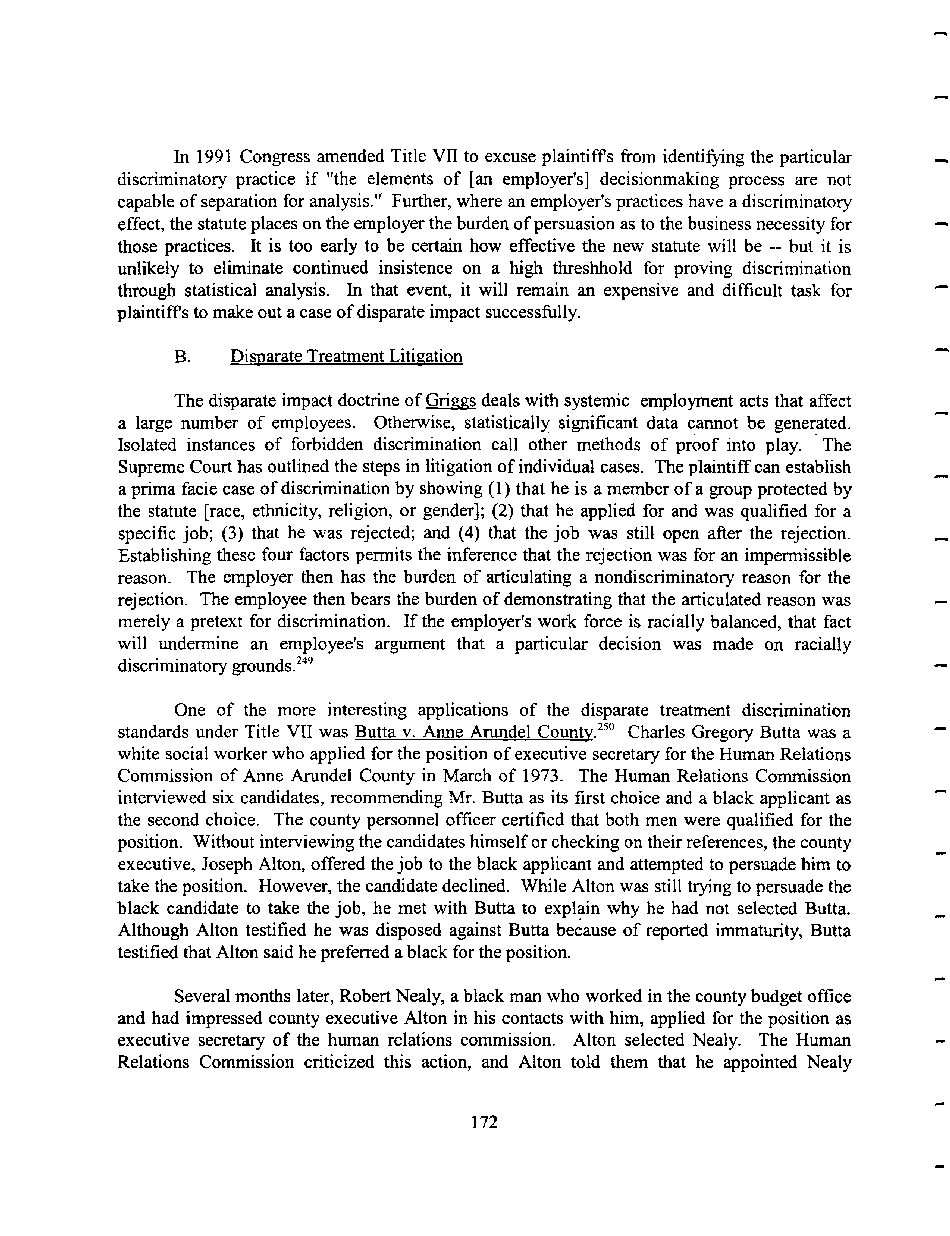|
In 1991 Congress amended Title VII to excuse plaintiffs from identifying the particular
discriminatory practice if "the elements of [an employer's] decisionmaking process are not
capable of separation for analysis." Further, where an employer's practices have a discriminatory
effect, the statute places on the employer the burden of persuasion as to the business necessity for
those practices. It is too early to be certain how effective the new statute will be — but it is
unlikely to eliminate continued insistence on a high threshhold for proving discrimination
through statistical analysis. In that event, it will remain an expensive and difficult task for
plaintiffs to make out a case of disparate impact successfully.
B. Disparate Treatment Litigation
The disparate impact doctrine of Griggs deals with systemic employment acts that affect
a large number of employees. Otherwise, statistically significant data cannot be generated.
Isolated instances of forbidden discrimination call other methods of proof into play. The
Supreme Court has outlined the steps in litigation of individual cases. The plaintiff can establish
a prima facie case of discrimination by showing (1) that he is a member of a group protected by
the statute [race, ethnicity, religion, or gender]; (2) that he applied for and was qualified for a
specific job; (3) that he was rejected; and (4) that the job was still open after the rejection.
Establishing these four factors permits the inference that the rejection was for an impermissible
reason. The employer then has the burden of articulating a nondiscriminatory reason for the
rejection. The employee then bears the burden of demonstrating that the articulated reason was
merely a pretext for discrimination. If the employer's work force is racially balanced, that fact
will undermine an employee's argument that a particular decision was made on racially
discriminatory grounds.249
One of the more interesting applications of the disparate treatment discrimination
standards under Title VII was Butta v. Anne Arundel County.250 Charles Gregory Butta was a
white social worker who applied for the position of executive secretary for the Human Relations
Commission of Anne Arundel County in March of 1973. The Human Relations Commission
interviewed six candidates, recommending Mr. Butta as its first choice and a black applicant as
the second choice. The county personnel officer certified that both men were qualified for the
position. Without interviewing the candidates himself or checking on their references, the county
executive, Joseph Alton, offered the job to the black applicant and attempted to persuade him to
take the position. However, the candidate declined. While Alton was still trying to persuade the
black candidate to take the job, he met with Butta to explain why he had not selected Butta.
Although Alton testified he was disposed against Butta because of reported immaturity, Butta
testified that Alton said he preferred a black for the position.
Several months later, Robert Nealy, a black man who worked in the county budget office
and had impressed county executive Alton in his contacts with him, applied for the position as
executive secretary of the human relations commission. Alton selected Nealy. The Human
Relations Commission criticized this action, and Alton told them that he appointed Nealy
172
�
|

